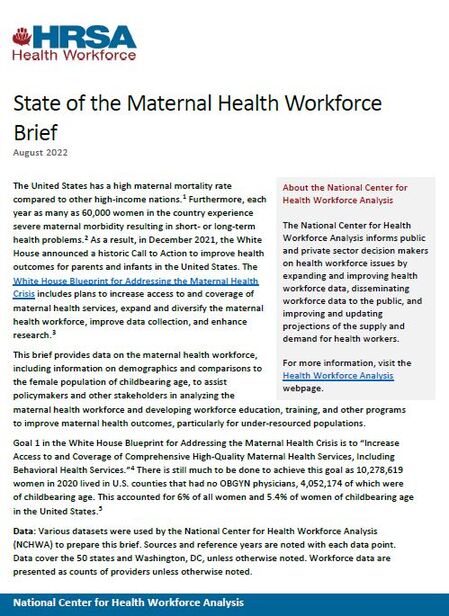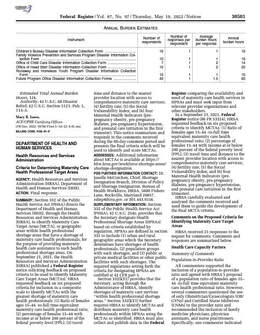Trends in State-Level Maternal Mortality by Racial and Ethnic Group in the United States
|
Report Finds 55% Of Rural US Hospitals Lack Labor And Delivery Services |
|
Evidence suggests that maternal mortality has been increasing in the US. Comprehensive estimates do not exist. Long-term trends in maternal mortality ratios (MMRs) for all states by racial and ethnic groups were estimated.
|
“Maternity deserts are a growing problem in the United States, especially for rural hospitals that have to shutter labor and delivery departments at higher rates than their urban counterparts, according to a new report from the Center for Healthcare Quality & Payment Reform (CHQPR).” Currently, “55 percent of rural hospitals in the US do not offer labor and delivery services, and in ten states, more than two-thirds of rural hospitals do not offer labor and delivery services, CHQPR reported.”
|
2023 March Of Dimes Report Card Shows Modest Improvement in U.S. Preterm Birth Rate, Which Remains at Decade-Long High, Earning Nation D+ GradeThe 2023 March of Dimes Report Card on the state of maternal and infant health, released yesterday, showed persistent racial disparities across key maternal and infant health indicators.
|
HHS to Improve Maternal Health Outcomes with New CMS Care ModelThe U.S. Department of Health and Human Services (HHS), through the Centers for Medicare & Medicaid Services (CMS), announced innovative actions to improve maternal health and birth outcomes for pregnant and postpartum women and their infants through the new Transforming Maternal Health (TMaH) Model. This 10-year payment and care-delivery model will support participating state Medicaid agencies (SMAs) in developing and implementing a whole-person approach to pregnancy, childbirth, and postpartum care for women with Medicaid and Children's Health Insurance Program (CHIP) coverage.
|
The Crisis in Rural Maternity CareAccording to the Center for Healthcare Quality & Payment Reform, 61%(57) of Iowa's rural hospitals are no longer delivering babies. Median minutes to alternative OB hospitals is 30 minutes.
Most rural hospitals in the US no longer deliver babies. Maternity care is far away for mothers in many rural communities. The travel time to a hospital with labor and delivery services is under 20 minutes, but in rural areas, the travel time is likely to be at least 30 minutes, and it is often 40 minutes or more. |
Improving Maternal Health Outcomes: What’s Working Across StatesWith maternal mortality rates rising across the U.S., states are taking measures to improve care through Medicaid, which covers more than 16 million women of reproductive age and 41 percent of all U.S. births
|




